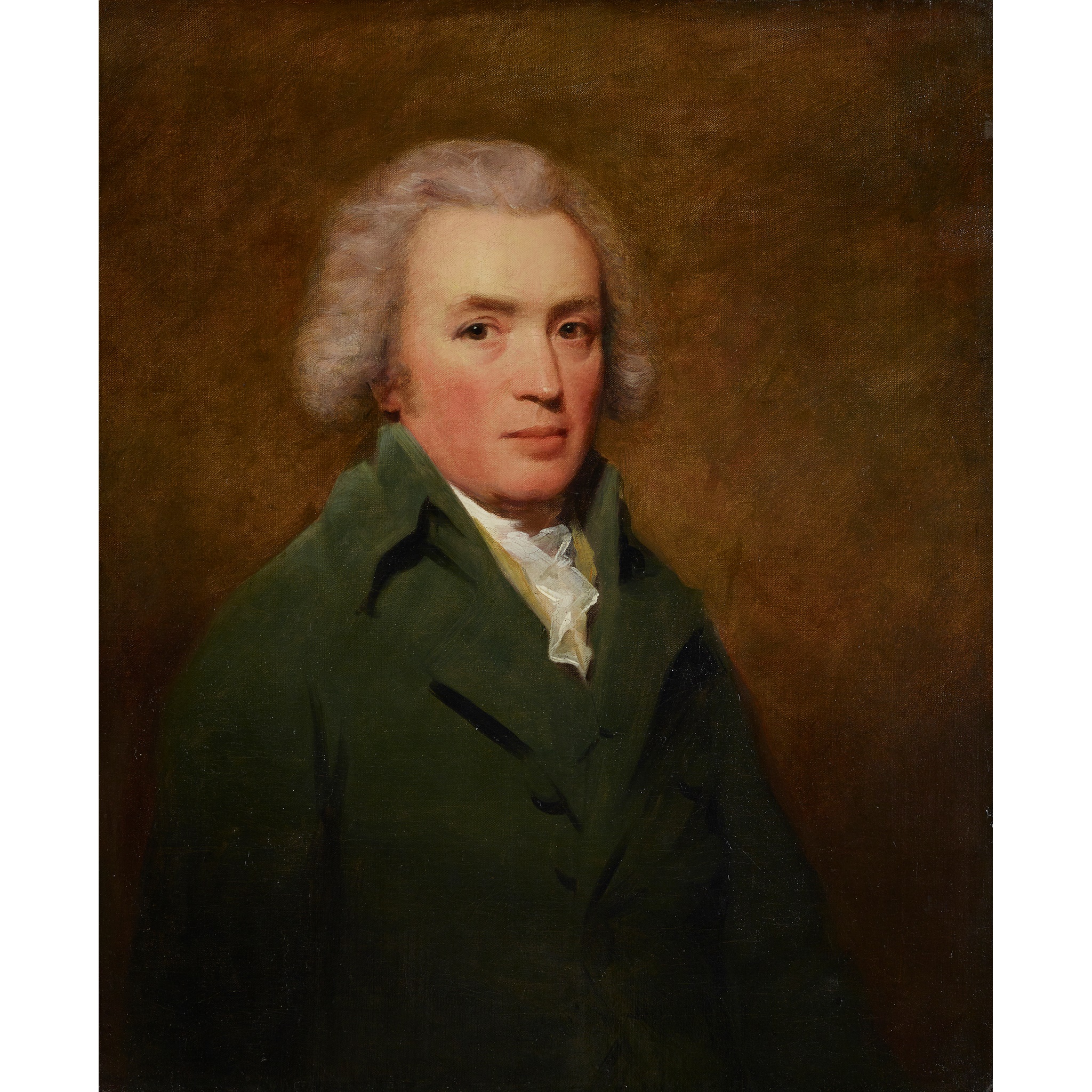SIR HENRY RAEBURN R.A. (SCOTTISH 1756-1823)
HALF-LENGTH PORTRAIT OF JAMES NEWBIGGING OF WHITEHOUSE
£8,820
Scottish Paintings & Sculpture
Auction: Evening Session | 7th December 2023 at 18:00
Description
Oil on canvas
Dimensions
76cm x 63.5cm (30in x 25in)
Provenance
Provenance:
Adam Rolland, Esq., Gask, Scotland, by 1876 to after 1901
Weekes (according to Greig), by 1911
Thomas Agnew & Sons, London
Mrs Henry Morgenthau, New York, by 1939
Newhouse Galleries, New York, NY
Mr. and Mrs. F. Howard Walsh, Fort Worth, Texas
Walsh Family Art Trust
Literature:
Sir Walter Armstrong, Sir Henry Raeburn: A Study, London, 1901, p.109
Edward Pinnington, Sir Henry Raeburn, W. Scott, London, 1904, p.243
James Greig, Sir Henry Raeburn, R. A.: His Life and Works, with a Catalogue of his Pictures, The Connoisseur (Otto Ltd), London, 1911, p.55
David Mackie, Sir Henry Raeburn Catalogue Raisonné, 6 volumes, unpublished manuscript, vol.III, pp.718-719, no.574
Footnote
Note: In his catalogue raisonné David Mackie suggests a date of c.1795.
Henry Raeburn’s portraiture is intimate. It does not wholly subscribe to the formal Romantic mode widely practiced by his contemporaries, instead presenting its subjects with sensitivity, individuality and warmth. His sitters appear as if mid-gesture, mid-breath, emerging from the shadowy depths of their composition and advancing towards a light source located not far behind the viewer. This effect is achieved with deft, confident strokes of pigment: note, for example, the mark-making used to denote Mr Newbigging's cravat, almost daring in its abbreviation; this is an artist fully aware of his talent and how best to wield it.
James Newbigging of Whitehouse was a solicitor and Writer to the Signet. In the late 1790s he was elected Clerk to Sir Henry Dundas whose political power in Scotland was at the time unsurpassed. Raeburn’s portrayal of Newbigging is tender and full of quiet personality: his sideways look and slightly pursed lips suggest a degree of reservation, the solicitor used to scrutinising others perhaps unused to Raeburn’s own scrutinising gaze. While little is known of Newbigging’s life, a painting of his wife is also listed in David Mackie’s catalogue raisonné, with a note that both portraits passed to their daughter Ann and her husband Adam Rolland of Gask. This portrait should therefore be understood as a private object of familial sentiment, as well as a public-facing record of Newbigging’s prominent standing in Edinburgh society, a dichotomy to which Raeburn’s style feels uniquely suited.
Raeburn is celebrated today as one of Scotland’s greatest artists, not least for his iconic oil of the ‘Skating Minister’ (Reverend Robert Walker Skating on Duddingston Loch, National Galleries of Scotland, NG 2112). Despite this, his beginnings in life were unassuming. Orphaned at a young age and fostered by his elder brother, the teenaged Raeburn seems to have first turned his hand to portraiture while apprenticed to an Edinburgh jeweller and goldsmith. He first produced miniatures, but within a matter of years he transitioned to oil painting. He worked from Edinburgh throughout his career, and by the end of his life was decorated with accolades, including an appointment as Painter and Limner to King George IV, alongside membership of the Royal Academy, Royal Society of Edinburgh and American Academy of Fine Arts.

